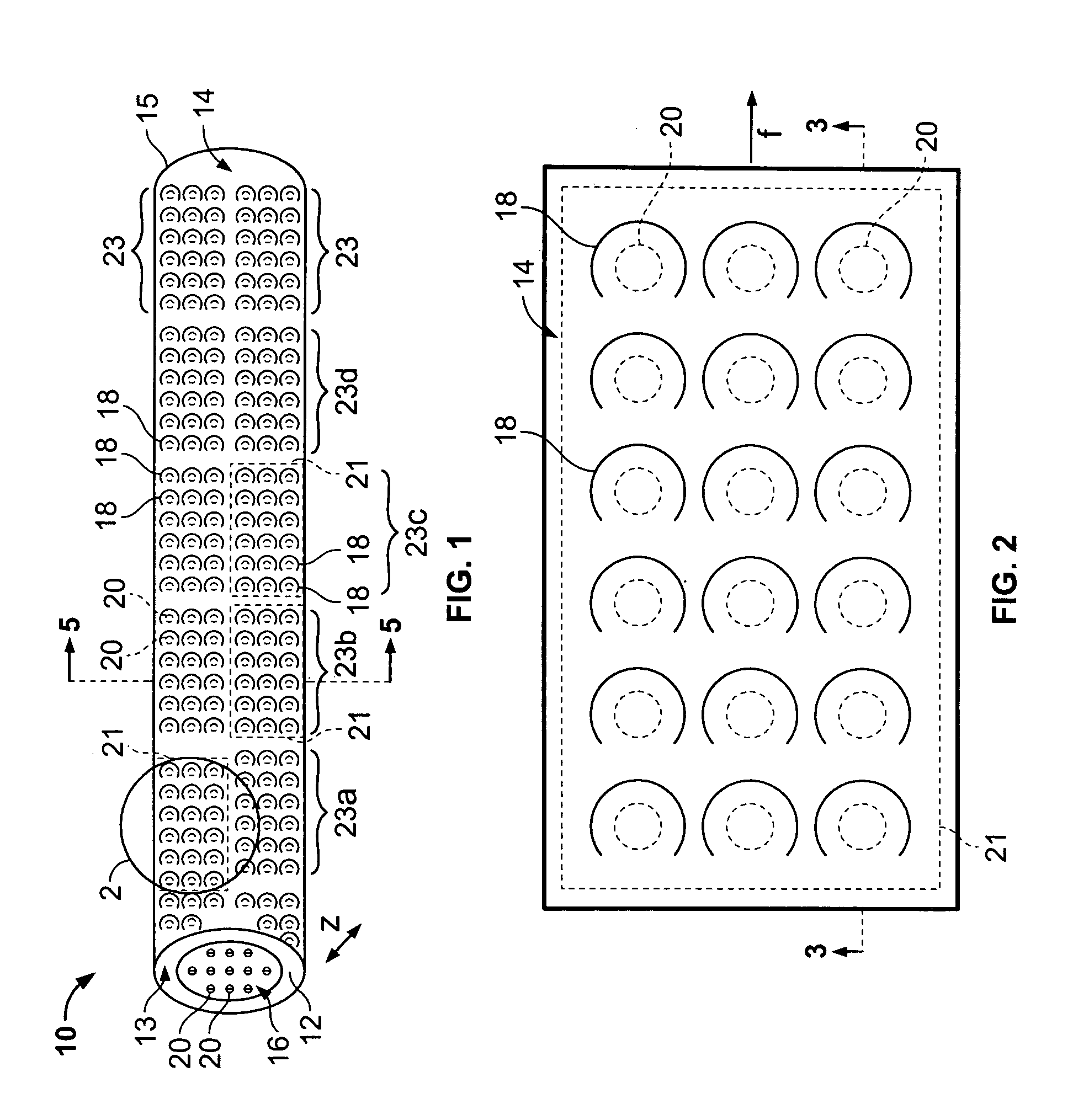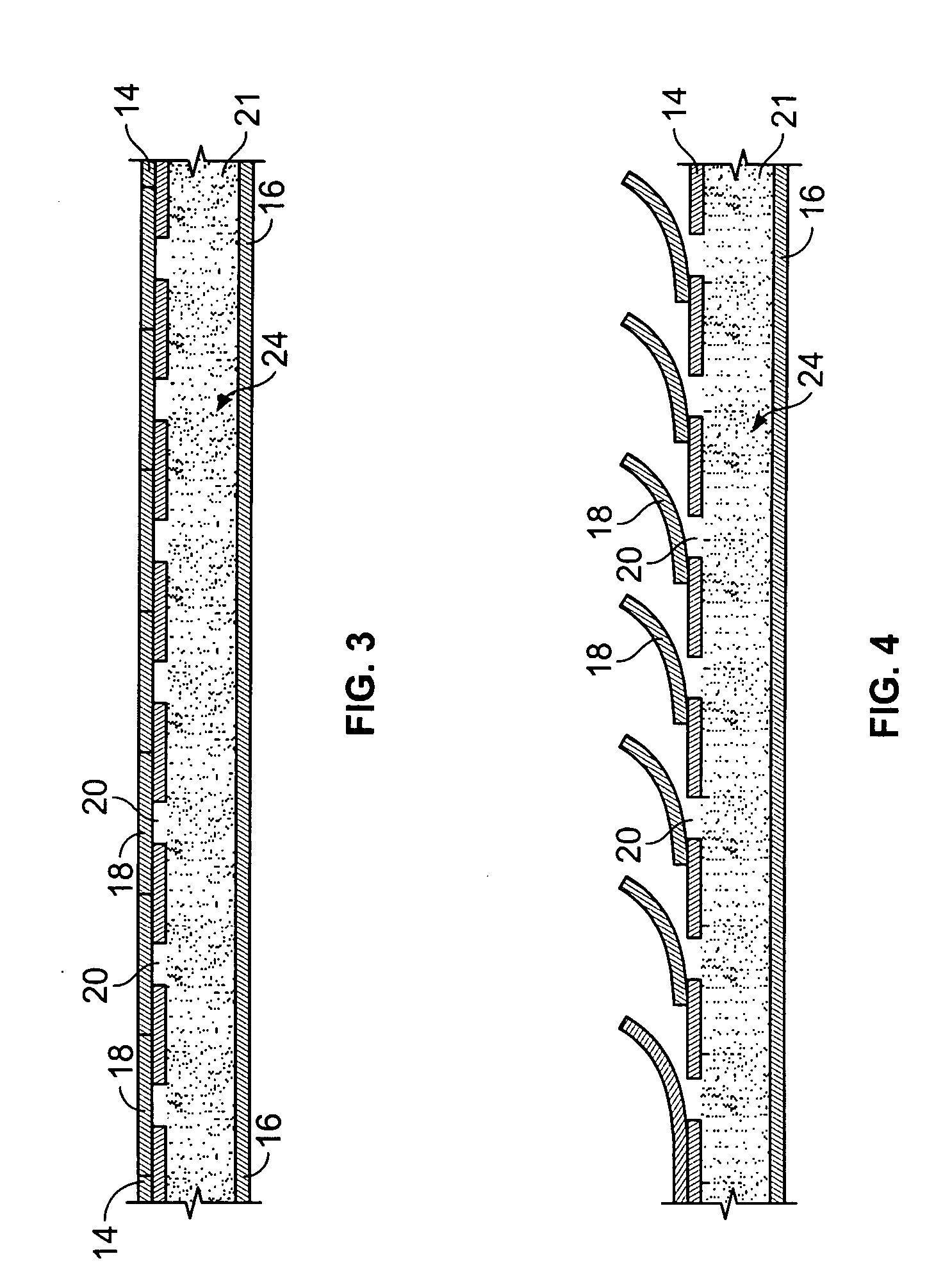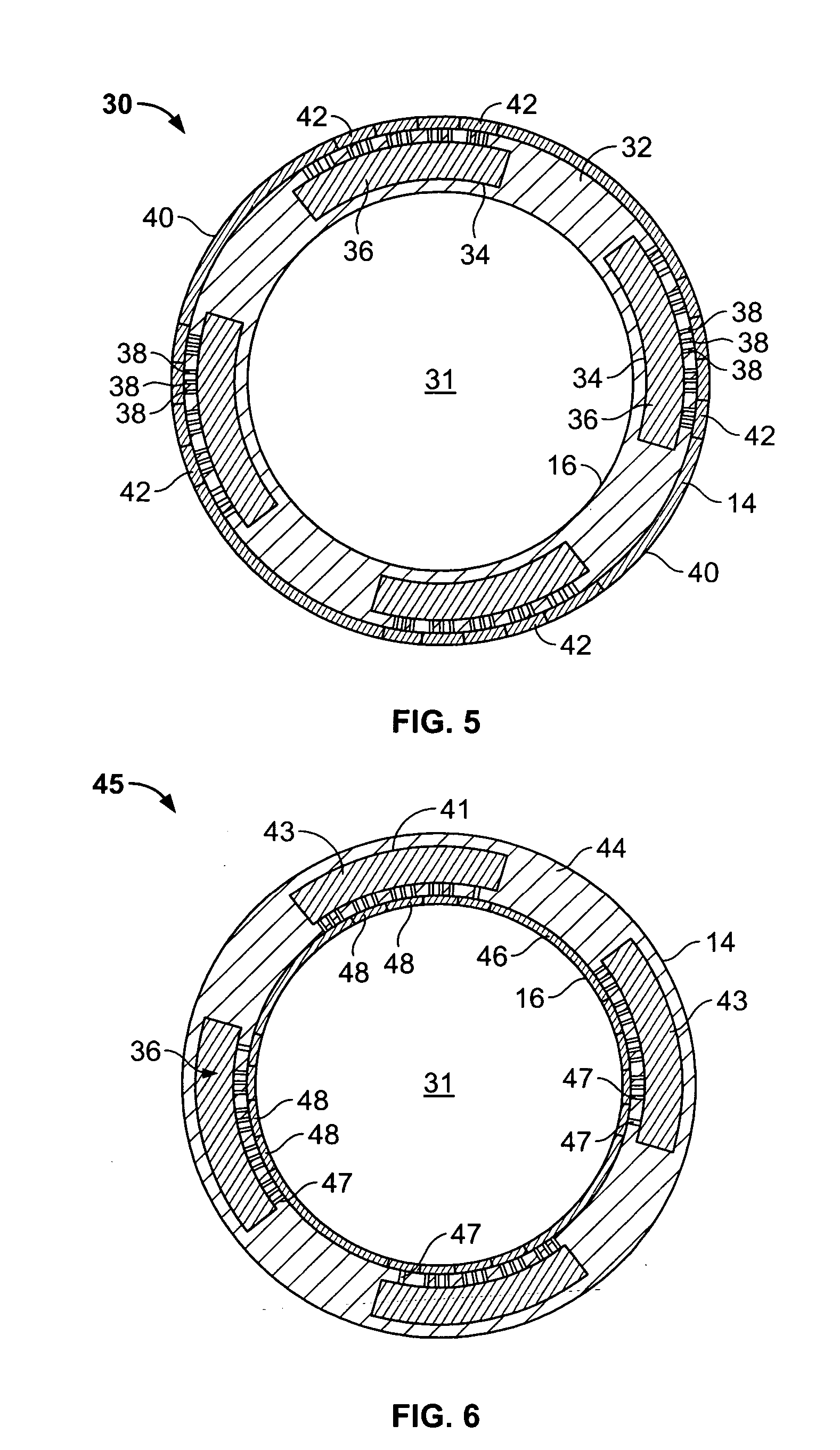Device for in vivo delivery of bioactive agents and method of manufacture thereof
- Summary
- Abstract
- Description
- Claims
- Application Information
AI Technical Summary
Benefits of technology
Problems solved by technology
Method used
Image
Examples
Embodiment Construction
[0037] With particular reference to FIGS. 1 and 2, the drug-eluting device 10 of the present invention consists generally of a body element 12, which for purposes of illustration only, is depicted in a generally tubular conformation having a first wall surface 14 and a second wall surface 16, a first end surface 13 and an opposing second end surface 15. A plurality of openings 20 pass through either or both of the first wall surface 14 and the second wall surface 16 and communicate between at least one chamber 21, shown in phantom, which resides entirely within the z-axis thickness of the drug-eluting device 10 and is defined between the first wall surface 14 and the second wall surface 16 with only at least one of the plurality of openings 20 communicating between the internal chamber 21 and either the first 14 or second 16 wall surface of the drug-eluting device 10. A plurality of cover members 18 are provided in or in association with either or both of the first wall surface 14 a...
PUM
 Login to View More
Login to View More Abstract
Description
Claims
Application Information
 Login to View More
Login to View More - R&D
- Intellectual Property
- Life Sciences
- Materials
- Tech Scout
- Unparalleled Data Quality
- Higher Quality Content
- 60% Fewer Hallucinations
Browse by: Latest US Patents, China's latest patents, Technical Efficacy Thesaurus, Application Domain, Technology Topic, Popular Technical Reports.
© 2025 PatSnap. All rights reserved.Legal|Privacy policy|Modern Slavery Act Transparency Statement|Sitemap|About US| Contact US: help@patsnap.com



